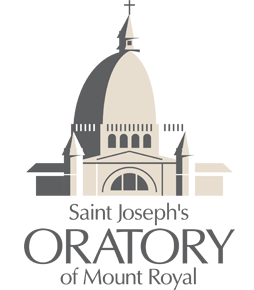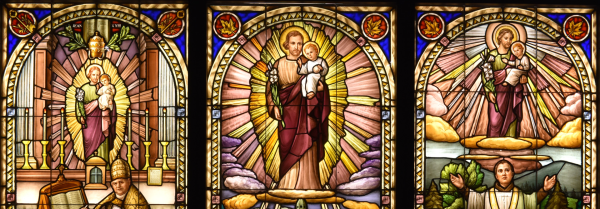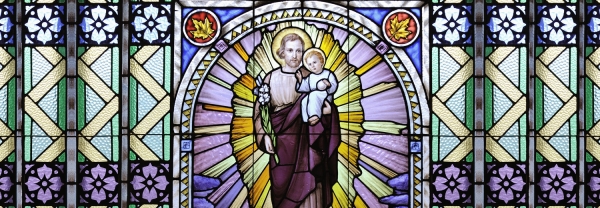Saint Joseph’s presence in my life
The Oratory is part of the Montreal landscape. My father told me that at the age of 10 – which brings us back to 1920 – he had the mumps and that it made him suffer terribly.
Wearily, his mother said: let’s go up to the Oratory to see Brother André. When they arrived, they got in line and she explained to him that her son had the mumps and that it made him suffer a lot. Brother André made a little pout, put both hands on my father’s ears, without touching them. And they leave. My father assures: the pain disappeared in the moment, there was nothing left.
1920: these were the great years of the Oratory. Brother André received 300 to 400 visitors a day!
I note that around 2010, while animating an ADACE in Notre-Dame des Bois, a village about 250 kilometers from Montreal, I recounted this fact. There were 12 people there and of the twelve, three knew people who had been healed by Brother André. Including myself, three out of twelve.
*
The Oratory is part of the Montreal landscape. As a child, my father took us to the Oratory once in a while.
Like all good French-Canadians, I received the name Joseph as my third name at my baptism. Like my sister received the name Marie.
As a student at Brébeuf College, once a year, in the spring, the students made their pilgrimage to the Oratory. In line, two by two, dressed in the College uniform, we would go up for Mass at the Oratory. This was a great outing for boarders.
Then, Saint Joseph and Brother André gradually faded away.
Converted to Philosophy II at Saint Mary’s College, before the testimony of a professor who achieved a spiritually satisfying integration of faith and intelligence, the Christian faith to which I adhered was a very rich worldview. This intellectual approach to the Christian faith saved my life.
As a student of philosophy, at the Institute of Medieval Studies, and then in theology with the Dominicans in Ottawa, I delved into the faith as an intellectual vision where popular devotions were looked down upon; except that in Ottawa there was a small place for Mary, given her importance to Saint Dominic!
It was only with time that I began to develop a concern for the “faith of the poor”, people of simple faith being also my brothers in Jesus Christ.
Back in Montreal, I remember those Pentecost Nights at the Oratory in the 1970s. Attached to the Charismatic Renewal, in which I really saw a special intervention of the Spirit to put the Church back on track in the line of the Council, I went a few times to these Nights of Pentecost which gathered the faithful of the Renewal for a complete night of prayer that ended in the early morning. And we would leave the Basilica at sunrise: a magnificent sight!
During all these years, I did not have a relationship with Saint Joseph. He was part of the baggage of the good Christian that I was trying to be. He was part of the landscape. In more technical terms, he was part of the known data of the Christian faith, known and respected data, but without any particular relationship with him.
It was not until I was 45 years old, when I was going through a terrible ordeal, that I started going to the Oratory two or even three times a day, to come away comforted. This lasted a few months. So I can say that I owe my life to the Oratory!
In 1992, after a one-year stay at Boston College in the United States, as a Lonergan Post-Doctoral Fellow, I found myself at Fides Publishing. It was there that I was offered the position of Director of the Research and Documentation Center on Saint Joseph at the Oratory.
I remember that, on that occasion, I met Father Aumont, rector of the Shrine at the time, who asked me what I thought of Saint Joseph. I had this Norman answer: “I’m not against it”. Whoever remembers the theological landscape of the time and the little consideration given to popular devotions, good for the many without much training, will understand that this was already a lot!
And I got caught up in the game. It was there that I developed an increasingly intense relationship with Saint Joseph, constantly praying to him to enlighten and guide me. Under his guidance I undertook a renewal of the Center that saved the day.
Too often in the Church, if not in the whole of society in Quebec, major changes are made in the mode of “scraping everything and starting over”. Under the guidance of Saint Joseph, I succeeded in saving the heritage of the Center by placing it in the larger context of a research on Saint Joseph, Brother André and the Oratory itself; and by shifting the Center from an accumulation of documentation to the gift to the Christian community of the fruits of this research. These were years of intense publication.
While I was on the sidelines returning from the United States, Saint Joseph took me by the neck and made me serve. I will be eternally grateful to the one who enabled me to succeed in my professional life both in study and management.
After eight years at the Oratory, I left to embark on a new adventure; after eight years in which I had exhausted the material I could fit in the rather narrow theoretical corridor of the research center. And I got tired of management: I was running a research center and 50% of my time was spent in management (committees, reports, meetings of all kinds).
A small group of concerned people came to tell me about a shrine dedicated to Saint Joseph on Mount Saint Joseph in the Megantic region. I had never heard of it, but after much insistence, they decided that I should visit the site. I was won over and said to myself: this is where I will come to live my retirement.
Thus, in the summer of 2002, I arrived in the Megantic region to lead a life of study and prayer, a hermit’s life devoted mainly to writing. With a pastoral involvement: settling in the area, I began to welcome people visiting the chapel of Mount Saint-Joseph.
I became the guardian, not in title but in effect, of the sanctuary, and went up there three or four times a week in the summer to ensure a Christian presence on the mountain. I spent more than fifteen years connected to the shrine, from 2002 to about 2017.
Thus, without having sought it out, I became the hermit of Megantic, or the hermit of Mount Saint Joseph, or the hermit of Saint Joseph, a well-known figure in the region.
Now retired, after a long vigil of more than fifteen years, I now live in a residence for independent or semi-independent seniors in the village of La Patrie. The statue of Saint Joseph is prominently displayed in my living room-prayer room!
*
If I try to conceptualize my evolution, I say to myself that I have gone from a notional knowledge of Saint Joseph, as part of the Christian message, to an increasingly intense devotion to him.
Within the Christian baggage, a figure suddenly lights up and a relationship is undertaken with it. This devotion is an attachment of the heart that grows. Saint Joseph becomes a person with whom one converses, to whom one confides and whose recommendations one follows. In the invisible world, someone is there who listens and speaks, and who pushes on events to bring them to a conclusion.
All this, of course, without losing sight of the fact that the Christian faith is first and foremost the establishment of a living relationship with Jesus Christ. But the living Lord can put saints on our path, and thus Saint Joseph, who help us to build something for Him.
From notional knowledge, then, to devotion, devotion bringing us into a relationship, an interpersonal relationship fruitful in good works for the Father’s House.
Pierre Robert




